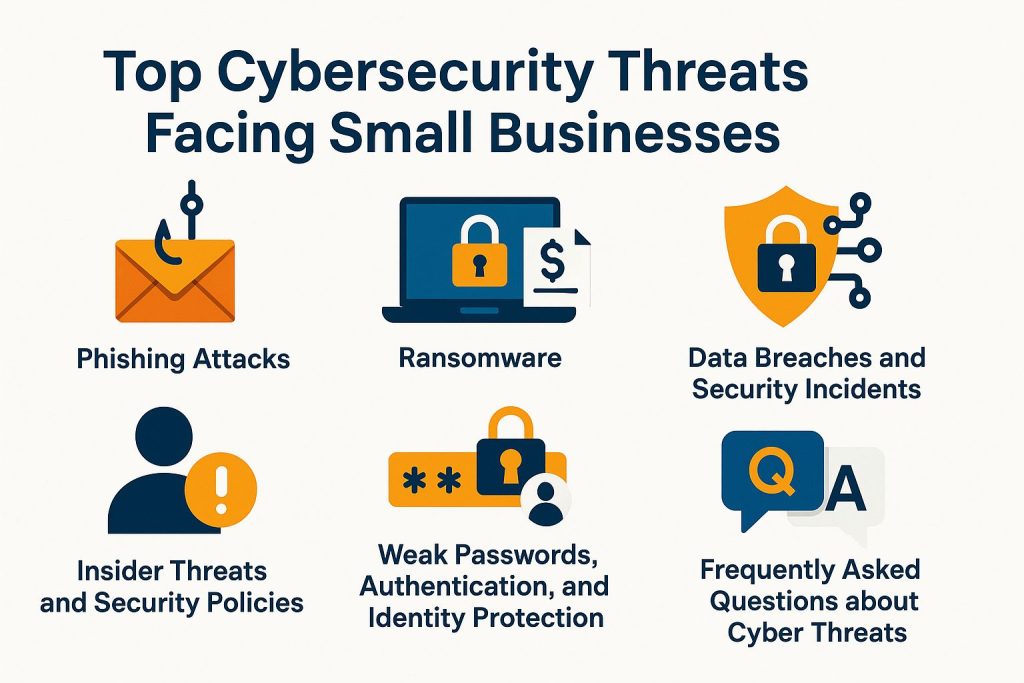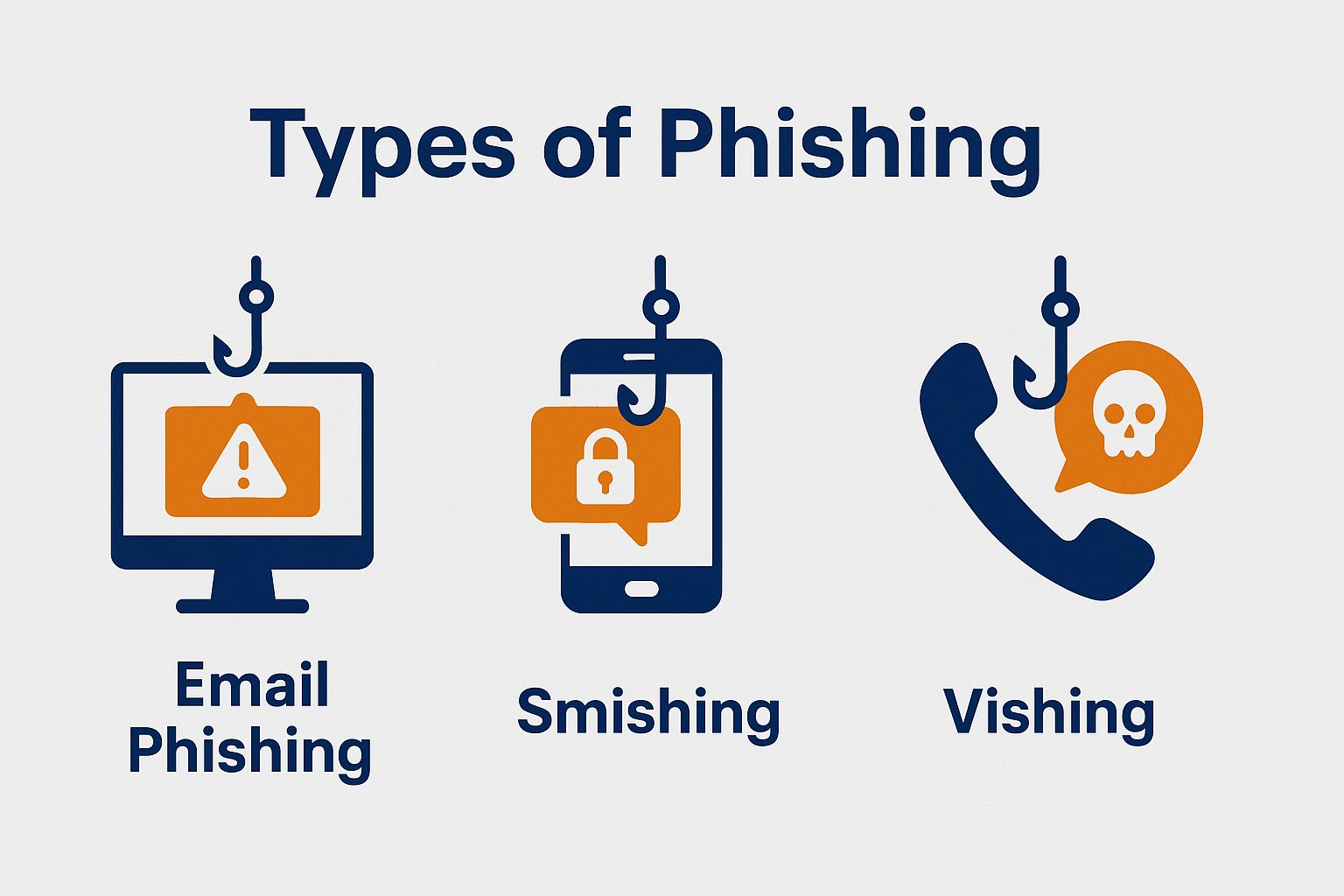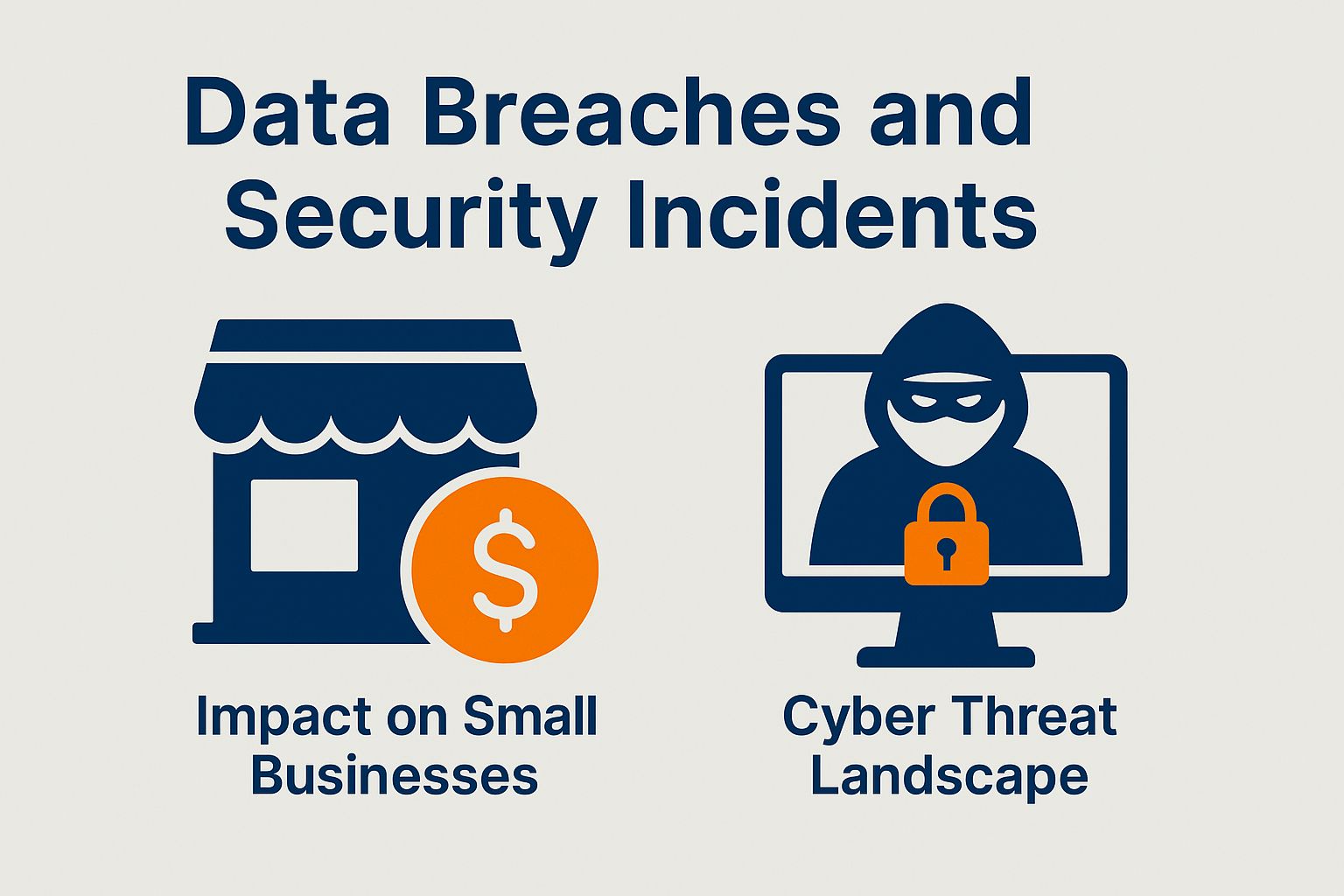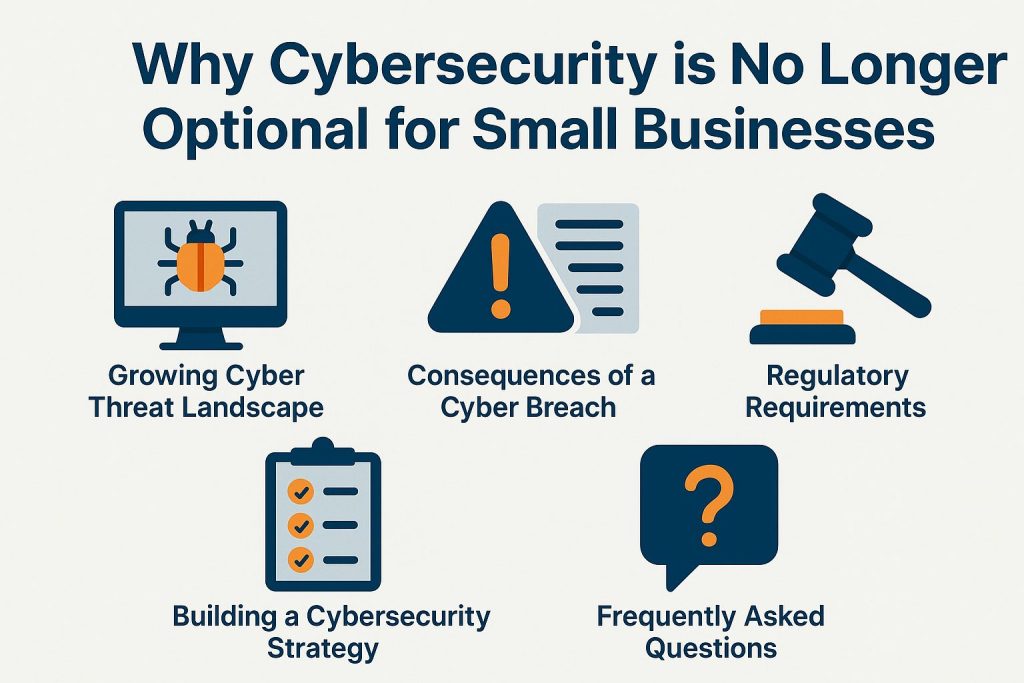Top Cybersecurity Threats Facing Small Businesses Today

As the digital world changes, small businesses face many cybersecurity threats. These threats can harm their operations. It is important to understand these dangers. Cyber incidents can have serious consequences. This article looks at common threats. These include phishing attacks, ransomware, and data breaches. It also discusses insider threats and weak authentication. Strong endpoint protection and cybersecurity awareness are essential.
Phishing Attacks
Phishing attacks cause 90% of data breaches. They exploit human psychology and are a major threat to organizations. Strong cybersecurity training and identity protection are needed. Recent high-profile incidents, such as the data breaches at Target and Uber, underscore the severe consequences that phishing can entail.
Phishing attacks often use fake emails or websites to trick people into sharing sensitive information.
To reduce the risk of phishing, organizations should hold regular training for employees. The focus should be on identifying suspicious communications. Additionally, tools such as KnowBe4 can provide simulated phishing tests to reinforce the training efforts, enhancing cybersecurity awareness and compliance.
Organizations should also utilize email authentication protocols like SPF and DKIM to minimize the likelihood of phishing attempts successfully reaching inboxes, ensuring better network security. Learn more about cybersecurity best practices for small businesses to further protect your organization.

Types of Phishing
Knowing the different types of phishing is essential for prevention. Each type targets different weaknesses in people and organizations. This shows the importance of cyber resilience and threat intelligence.
The primary types of phishing include:
- Spear Phishing: This method targets specific individuals or organizations, often utilizing personal information to appear legitimate. A recent study indicates that 91% of cyberattacks begin with spear phishing.
- Whaling: This type focuses on high-profile individuals, such as C-suite executives, exploiting sensitive information for maximum gain.
- Vishing: Also known as voice phishing, this occurs through phone calls, where attackers deceive victims into sharing private data. Reports reveal that 20% of these attacks result in financial loss.
- Smishing: This involves phishing conducted via SMS. The prevalence of this method has increased significantly, with over 70% of individuals reportedly receiving smishing texts in the past year.
By knowing these types, organizations can create specific defenses against phishing. They should include security best practices and response measures.
Ransomware
Ransomware is one of the most destructive types of malware. Attacks have increased by over 150% in the past year. This requires strong threat mitigation and security updates. These attacks typically involve the encryption of a company’s data, with criminals demanding a ransom for its release, a tactic that often leaves small businesses particularly vulnerable.
For example, a restaurant in Chicago lost access to its financial records. Recovery costs exceeded $100,000. This shows the need for strong backups and business continuity plans. This incident underscores the critical importance of regular data backups, cybersecurity tools, and employee training on phishing threats.
To reduce risks, businesses can use strong cybersecurity measures. These include antivirus software, firewalls, and regular updates to protect against new threats. For an extensive analysis of why businesses should adopt these practices, consider exploring our insights on a Proactive IT Security Strategy for Business Success.
Data Breaches and Security Incidents
Data breaches are common. Small businesses face 43% of these incidents. They expose sensitive information and may incur substantial fines. Stronger security compliance and incident management are necessary. A data breach can lead to loss of customer trust, legal liabilities, and financial burdens.
In 2023, the average cost of a data breach was $4.35 million, according to IBM. Businesses must follow regulations like GDPR. Failing to report a breach within 72 hours can lead to fines of up to EUR20 million or 4% of annual global revenue, emphasizing the importance of cyber risk assessment and data protection laws.
Small businesses must prioritize data protection. They should invest in employee training to lower risks. This improves their cyber defense and hygiene. This approach aligns with the principles outlined in our analysis of cybersecurity training for employees.

Impact on Small Businesses and Cyber Threat Landscape
Data breaches can greatly impact small businesses. The average cost per breach is $200,000. Many affected businesses close due to lack of cyber insurance and weak security measures. According to a study conducted by IBM, 60% of small businesses that experience a data breach close within six months. A pertinent example is XYZ Widgets, a small manufacturing company that was compelled to shut down after a breach compromised customer data. This incident not only led to significant recovery costs but also caused irreparable damage to the company’s reputation, highlighting the importance of cyber threat landscape awareness.
To avoid these outcomes, businesses should use strong security measures, such as:
- Regular software updates
- Employee training on phishing attacks
- Investment in cybersecurity insurance
Implementing these measures can significantly reduce the risk of a data breach and enhance overall cyber safety.
Insider Threats and Security Policies
Insider threats continue to pose a serious danger to small businesses. In fact, 34% of companies reported at least one insider-related security issue last year. These threats typically fall into two categories: malicious insiders who act with harmful intent, and careless employees who accidentally expose sensitive data. Both cases highlight the urgent need for stronger employee awareness and better monitoring.
According to research, 70% of insider incidents involve unintentional mistakes by employees. These often happen because of poor security habits or a lack of training on protecting sensitive information.
To reduce the risk, businesses should put systems in place to detect unusual activity—tools like Exabeam or Sumo Logic can help. Just as important is providing regular employee training focused on cybersecurity, data protection, and how to spot phishing scams. For more details, check out our article on Cybersecurity Training for Employees in Greensboro.
Ultimately, combining smart technology with ongoing education builds a much stronger defense.
Weak Passwords, Authentication, and Identity Protection
Weak passwords remain one of the easiest ways for cybercriminals to gain access to systems. In fact, more than 80% of data breaches involve stolen or reused passwords. This makes password security one of the first places businesses should focus their efforts.
To stay safe online, always create strong and unique passwords. Aim for at least 12 characters, using a mix of uppercase letters, lowercase letters, numbers, and symbols. For example, “C0mpl3x@2023!” is far more secure than a common password like “Password123.”
In addition, enabling multi-factor authentication (MFA) can add another layer of security. MFA requires users to confirm their identity with a second method—like a code sent to their phone—which helps prevent unauthorized access even if the password is stolen.
Using a password manager such as LastPass or 1Password is also highly recommended. These tools not only store your passwords safely but also generate strong, unique ones automatically—making your accounts much harder to hack.
Together, these simple practices significantly lower the risk of a cyberattack and help small businesses build stronger online protection.
Frequently Asked Questions about Cyber Threats
What are the top cybersecurity threats facing small businesses today?
The top cybersecurity threats facing small businesses today include phishing attacks, ransomware, social engineering, insider threats, and weak passwords.
How can phishing attacks affect small businesses and lead to security breaches?
Phishing attacks trick employees. They may provide sensitive information or download malware. This puts the business at risk of data breaches and financial losses.
What is ransomware? How does it impact small businesses?
Ransomware is malware that encrypts data. It demands payment for access. This can cause significant financial and operational damage to small businesses.
How do social engineering and online scams put small businesses at risk?
Social engineering techniques can manipulate employees. This includes email or phone scams. They may share confidential information or give access to company systems. This leaves the business vulnerable to cyber attacks.
What are insider threats and how can they impact small businesses?
Insider threats are actions by employees or former employees. They can harm the business, either intentionally or unintentionally. This includes data theft, sabotage, or accidental data breaches.
Why are weak passwords a cybersecurity threat for small businesses?
Weak passwords make it easier for cybercriminals to access systems and data. This can lead to data breaches, financial losses, and damage to the business’s reputation.




